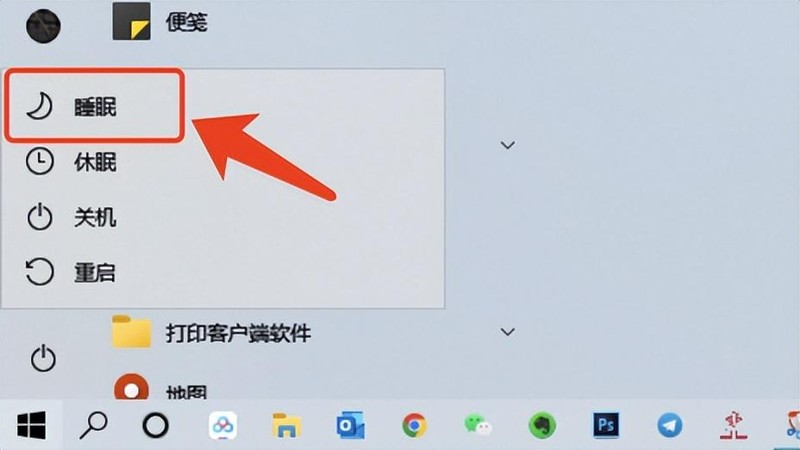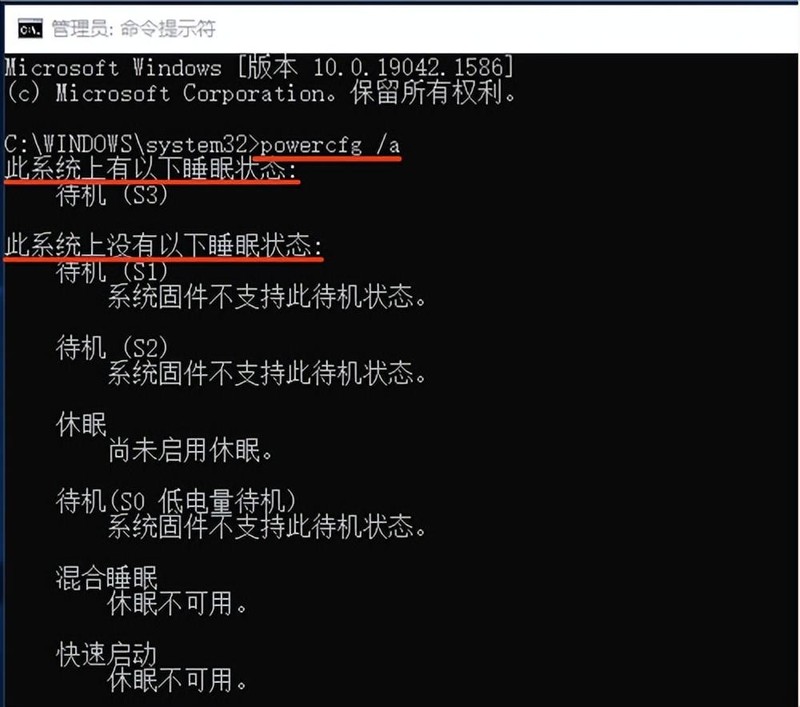
Computer sleep state means that the computer enters a low-power standby state, retaining the current working environment and data, while turning off hardware devices to save energy. Compared with shutdown and hibernation, sleep state has faster recovery speed and lower energy consumption. Shutdown is to completely shut down the computer and all programs and data will be cleared. Hibernation saves the current working environment and data to the hard disk, then shuts down the computer and restores it to the previous state when it is started again. Choosing the appropriate computer status according to actual needs can effectively save energy and extend the service life of the computer.
Article Directory:
1. What is the difference between sleep, shutdown and hibernation?
2. Under what circumstances do you need to shut down/sleep/hibernate?
1. When do I need to shut down my computer?
2. Under what circumstances is sleep used?
① How to enter sleep state?
② How to resume work from sleep?
3. Under what circumstances should hibernation be used?
① How to enter hibernation state?
② How to resume work from hibernation?
3. Tips
What is the difference between sleep, shutdown and hibernation?
Shutdown
This is the most familiar to everyone. When shutting down, the system first closes all running programs and then shuts down system background services. Subsequently, the system requests the motherboard to shut down, and the motherboard disconnects the power supply enable of the power supply, allowing the power supply to cut off power supply to most devices (only some internal parts will still maintain power supply, such as clocks, USB power supply, etc.). The computer shuts down completely.


Sleep
After the computer enters sleep mode, Windows will first save the data in the memory to the hard disk, and at the same time cut off all the data except the memory. Power supply for other equipment.
When restoring, if there is no power outage, the system can immediately return to where you left it; even if the power is insufficient and the power is outage, you don’t have to worry about losing your work due to battery exhaustion, because Windows will automatically save all Work and shut down the computer.
Advantages: Quickly enter the system and resume work, consuming very little power. The system will automatically save all work when the battery is low.
Disadvantages: If the power is cut off midway, the recovery speed from the hard disk is slightly slower.
Hibernation
refers to shutting down the computer while keeping it running. When using hibernation, Windows will save the data in the memory to a file in the root directory of the system disk on the hard disk (this file can be understood as a "mirror" of the memory state), and then shut down the computer. Therefore, after hibernation, even if the power is cut off, there will be no impact on the computer or data.
Advantages:
① Among all the energy-saving states used by Windows, hibernation consumes the least power and is not afraid of power outages;
② Again When you start your computer, you can return to where you left off (although not as fast as the sleep option)
Cons: This option is designed for laptops and may not work on all computers.
When to shut down/sleep/hibernate?
When do I need to shut down?
1. Microsoft technical support states that in daily use, Windows systems do not need to be turned on and off frequently. Except for the following two situations:
① Adding or upgrading hardware (such as installing memory, disk drives, sound cards, or video cards);
② Adding printers, monitors, external drives, or other unconnected When connecting hardware devices to Universal Serial Bus (USB) or IEEE 1394 ports, you need to shut down the computer and then disconnect power before continuing the upgrade or operation.
2. If you do not use the computer for a long time, for battery maintenance and other considerations, you can save the files and programs and then shut down the computer.
When to use sleep?
Based on the fact that the computer consumes very little power in the sleep state and can quickly enter the system to resume work. Therefore, when you need to leave the computer for a short period of time, such as drinking a cup of coffee, taking a nap or getting off work at night, etc. , it is very suitable to use "sleep".
How to enter sleep state?
For many computers (especially laptops and tablets), the computer goes to sleep when you close the display or press the power button. Or directly select [Sleep] from the power options of the "Start Menu".


#How to resume work from sleep?
Most computers can be restored by pressing the power button, but not all computers are the same. You may also be able to wake up by pressing any key on the keyboard, clicking the mouse, or opening the lid of your laptop. It depends on your computer situation.
When to use hibernation?
Use hibernation if you know you won't be using your computer for a long period of time, and charging the battery during that time is not possible.
How to enter hibernation?
Different system versions may have different placement of the sleep button. Trying to find it is a bit like a scavenger hunt.
Situation 1:
Click [Power Options] in the [Start] menu, see the [Hibernate] button, and click it.


Case 2:
There is no hibernation in the power options
Step 1:
Click [Start], select [Settings] → [System] → [Power and Sleep] → [Other Power Settings] → [Choose what the power button does] → [Change settings that are currently unavailable], below Under [Shutdown Settings], select the [Hibernate] checkbox, and finally click [Save Changes].


Step 2:
Restart the computer, and then click [Power Options] in the [Start] menu I see the hibernation option.
Situation 3:
The hibernation checkbox cannot be found in the power options
Step 1, check whether your computer provides a hibernation option. The method is as follows:
① Search [cmd] in the menu bar search box and select [Run as administrator];




Step 2, manually enable the hibernation function. The method is as follows:
① In the command prompt just now, enter [powercfg -h on] and [Enter]. This command is used to enable the hibernation function; ② Because returning The system behind the car will not immediately feedback whether it is successful or not, so you need to enter [powercfg /a] again and [Enter] to check. As shown below↓ Hibernation has been successfully enabled.

Step 3, restart the computer;
Step 4, repeat "Situation Steps in "2".
How to resume work from hibernation: Resume by pressing the power button. Warm Tips:♦️ If a device connected to your computer (such as a monitor, printer, or scanner) does not work correctly after waking from sleep or hibernation, you may need to disconnect it first Device is connected and reconnect or restart the computer. Also make sure you have the latest drivers for all your devices.♦️ The above suggestions refer to Microsoft support. They are mainly from the perspective of everyone's use and do not take into account the loss, lifespan and other unexpected problems of the hardware.
♦️ As a person who never shuts down his computer for a long time, He Yang always puts his laptop in an unplugged sleep state after get off work. After work, he can enter the program in a few seconds after turning on the computer. However, there have been some BUGs (very few), such as Can't boot, freezes... Just restart it and it'll be fine.
So the ultimate suggestion:
Shutdown, sleep, and hibernation all have their own advantages and disadvantages. If you need to turn on the computer frequently to handle work during the holidays, you can choose sleep; if you don’t use it for a long time, you can choose according to your own situation. Choose to hibernate or shut down.
In addition, with the recent recurrence of the epidemic, in order to return to normal life as soon as possible, many friends have stayed in the city where they work, or even been locked down at home, unable to go out to play or go back to their hometowns to visit their families.
ok, the above is the content of the article I compiled for you. I hope it can be helpful to my friends. I read this article What is the meaning of computer sleep state "Recommend the difference between computer sleep, shutdown, and hibernation" but did not read it. If you understand, it is recommended to read it again. Please continue to check out other related content on this site’s learning network!
The above is the detailed content of What does computer sleep state mean? Recommended differences between computer sleep, shutdown, and hibernation. For more information, please follow other related articles on the PHP Chinese website!




